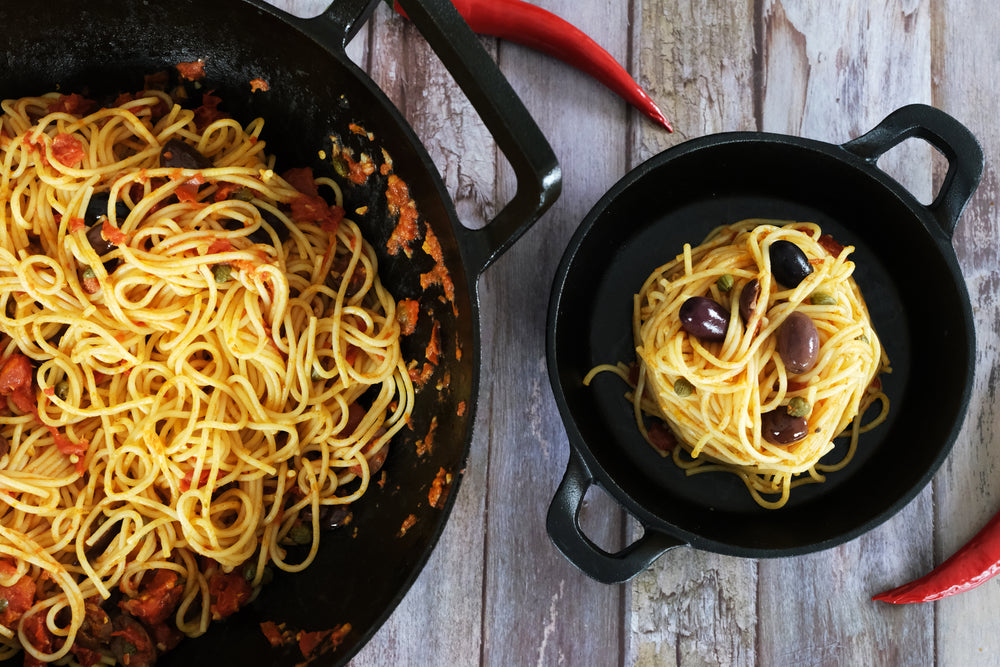برياني: رحلة طهي عبر النكهة والتقاليد

البرياني، طبق يتجاوز الحدود ويجمع الناس من خلال مزيجه العطري من التوابل والأرز الطري والنكهة الغنية. هذا الطبق الأيقوني له تاريخ غني وأهمية ثقافية متنوعة جعلته مفضلًا في جميع أنحاء العالم. في هذه التدوينة، سنستكشف أصول البرياني، فوائده الصحية، فن طهي هذا الطبق الشهي، والتتبيلات وأدوات الطهي الأساسية لرفع تجربتك مع البرياني.
أصول البرياني
يمكن تتبع جذور البرياني إلى شبه القارة الهندية، حيث تطور الطبق على مر القرون من خلال تأثيرات طهوية مختلفة. يعتقد بعض المؤرخين أن البرياني نشأ في شبه القارة الهندية خلال الإمبراطورية المغولية، بينما ينسب آخرون بداياته إلى طبق الفلاف الفارسي. بغض النظر عن أصله الدقيق، أصبح البرياني ظاهرة طهوية مع تنوعات إقليمية تعكس الثقافات والأذواق المتنوعة في شبه القارة.

الفوائد الصحية للبرياني
على عكس الاعتقاد الخاطئ بأن البرياني طبق مفرط وغير صحي، يمكن أن يكون في الواقع وجبة متوازنة جيدًا عند تحضيره بعناية. استخدام التوابل العطرية مثل الكركم والكمون والكزبرة لا يمنح فقط نكهة غنية بل يساهم أيضًا في الفوائد الصحية المحتملة للطبق. هذه التوابل معروفة بخصائصها المضادة للالتهابات ومضادات الأكسدة، مما يجعل البرياني ليس مجرد متعة للذوق بل خيارًا مغذيًا عند تناوله باعتدال.

كيفية طهي البرياني
فن طهي البرياني يكمن في الترتيب الدقيق للمكونات وعملية الطهي البطيء التي تسمح للنكهات بالاندماج معًا. الطريقتان الرئيسيتان لتحضير البرياني هما طريقة "باكي"، حيث يُطهى اللحم والأرز جزئيًا قبل الترتيب، وطريقة "كاشي"، حيث يُرتب اللحم النيء والأرز المسلوق جزئيًا معًا. يعتمد اختيار الطريقة غالبًا على التفضيلات الإقليمية والتقاليد العائلية، وكلاهما يساهم في الطابع الفريد لكل نوع من أنواع البرياني.
التتبيل
في قلب مذاق البرياني الذي لا يقاوم يوجد المزيج المتناغم من التوابل التي تتبل الطبق. تشمل التوابل الشائعة القرفة، الهيل، القرنفل، أوراق الغار، الكزبرة، بذور الكمون، حبات الفلفل الأسود، الشمر، القرنفل واليانسون النجمي، التي تضفي على الأرز واللحم نكهاتها المميزة. بالإضافة إلى ذلك، غالبًا ما يُستخدم الحليب المنقوع بالزعفران لإضافة لون زاهي وعطر خفيف للطبق. الأعشاب الطازجة مثل النعناع والكزبرة تضيف نكهة منعشة تعزز جاذبية البرياني بشكل عام.

أدوات الطهي المستخدمة
اختيار أدوات الطهي المناسبة أمر حاسم لتحقيق برياني مثالي. تقليديًا، يُستخدم وعاء ثقيل القاع واسع الفم يُعرف باسم "هندي" لطهي البرياني. القاعدة العريضة تسمح بتوزيع الحرارة بشكل متساوٍ، والغطاء المحكم يساعد على حبس البخار، مما يضمن طهي الأرز بشكل مثالي. بدلاً من ذلك، يمكن استخدام مقلاة ثقيلة القاع، طبق بالتي أو Dutch oven لمحاكاة تقنية الطهي البطيء الضرورية للبرياني.

الخاتمة
البرياني، بتاريخها الغني وتنوعها الكبير ونكهاتها الرائعة، استحقت بحق مكانتها كطبق محبوب حول العالم. سواء استمتع بها في المناسبات الاحتفالية أو كوجبة عائلية مريحة، يظل البرياني تحفة طهي تتجاوز الحدود وتجمع الناس معًا. لذا، في المرة القادمة التي تبدأ فيها رحلة تحضير البرياني، استمتع ليس فقط بالمذاق بل أيضًا بالنسيج الثقافي وفن الطهي الذي يجسده هذا الطبق الأيقوني.
مواضيع ذات صلة:















اترك تعليقًا